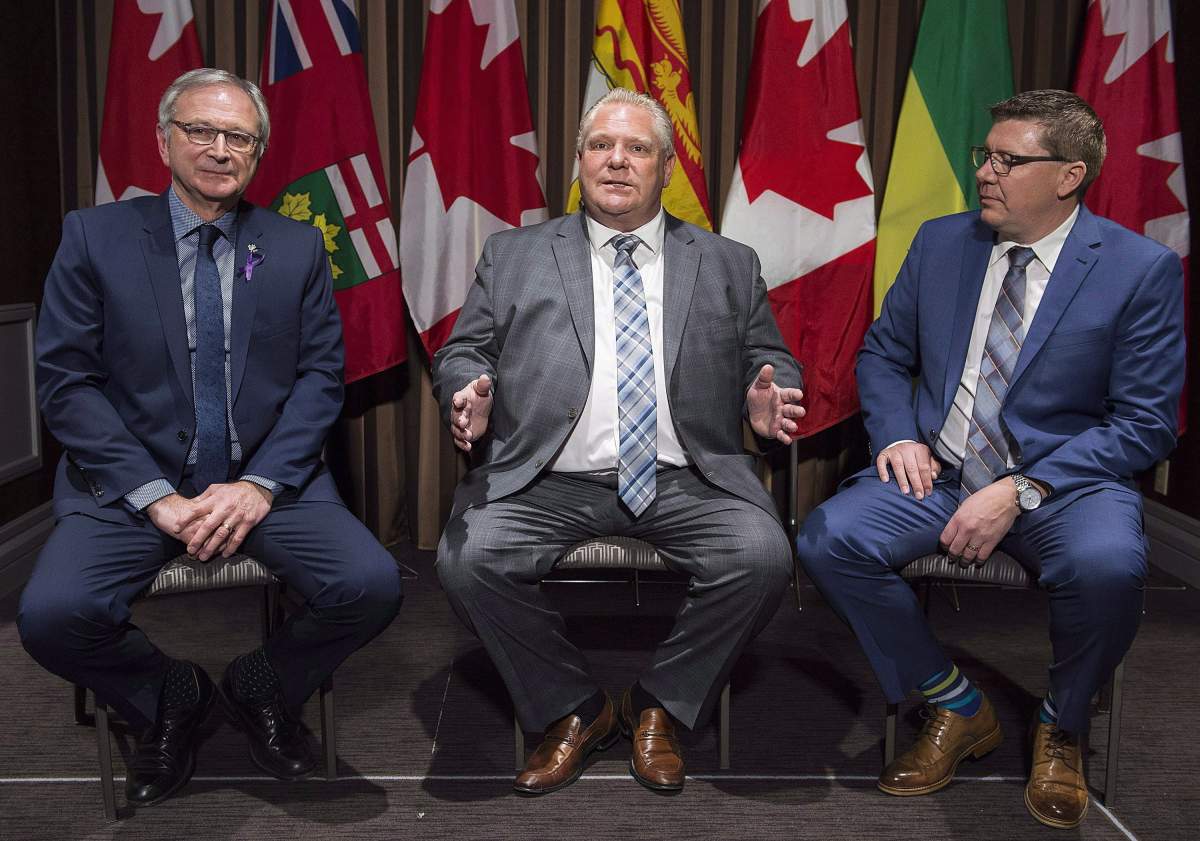Three Canadian premiers have announced their plan to explore new technology in nuclear power generation as a way to fight climate change, dealing a blow to the federal government’s carbon tax.

On Sunday, Saskatchewan Premier Scott Moe, Ontario Premier Doug Ford and New Brunswick Premier Blaine Higgs signed a Memorandum of Understanding to collaborate on the development and deployment of nuclear reactors, also known as Small Modular Reactors (SMRs), in Canada.
Moe said Canada’s responsibility to address climate change also comes with a responsibility to protect the economy by keeping sustainable industries competitive.

But are small nuclear reactors really better? Here’s what you need to know:
What are SMRs, anyway?
Small modular reactors are nuclear fission reactors that are slated to be built at a smaller size but in larger numbers than most of the world’s current nuclear fleet. According to the International Atomic Energy Agency, more than 400 nuclear reactors in 30 countries currently provide about 11 per cent of the world’s electricity.
The size of reactor units has grown from 60 megawatts electric to more than 1600 MWe since the 1950s, with corresponding economies of scale in operation.
Canada’s Ministry of Natural Resources said SMRs are designed to be built at a smaller scale than traditional nuclear reactors with lower up-front capital costs and enhanced safety features. Some SMR designs are small enough to fit in a gymnasium.
The International Atomic Energy Agency defines “small” as under 300 MWe, and up to about 700 MWe as “medium” — including many operational units from the 20th century.
Pro: They don’t emit greenhouse gases

Get breaking National news
Maude-Émilie Pagé, director of communications for Atomic Energy of Canada, said there are a lot of benefits to using SMRs. Small nuclear reactors are an extremely low carbon energy source that doesn’t emit greenhouse gases, she said.
“You can go from just a couple of megawatts that would power, let’s say, a really small village, to about 300 megawatts that probably could power a town of 200,000 people depending on their energy needs.”
Waste from coal, natural gas and electricity production can pollute the air with particulates and greenhouse gases. When it comes to SMRs, Pagé said: “there is no such thing.”
Small nuclear reactors would produce radioactive waste, rather than emit greenhouse gases into the air — which is easier to contain.
Canada is a world leader in dealing with nuclear waste, Pagé said, and has the funding to effectively manage the excess, as well as an inventory to account for it.
Jason Donev, a senior instructor at the University of Calgary who teaches about nuclear power and climate change, agrees. He said certain SMRs are able to turn the waste of large nuclear reactors into usable electricity.
“This is one of those exciting things where it would do a lot of environmental good and a lot of economic good,” said Donev, who is also a member of the Canadian Association of Physicists.

Con: They won’t be commercially viable for years
The provincial leaders said it could be an opportunity for economic growth, estimating the Canadian market for this energy at $10 billion and the global market at $150 billion — but it currently isn’t viable.
Donev said it could take anywhere between five and 15 years to become a commercially viable product.
With climate change moving rapidly towards the point of no return, time is of the essence. And while developing SMR technology would take time, Donev argued: “we don’t have time not to.”
“There is not the ability to deploy that much wind and that much solar and not much hydro,” said Donev. “We need to bring all of the solutions to the table.”
SMRs won’t solve climate change
Donev said small nuclear reactors are part of the “many types of solutions” Canada is going to need to fight climate change, but that they shouldn’t replace measures like the carbon tax or other renewable energy sources.
When asked about some provinces’ resistance to the carbon tax, Donev said whether it’s a cap and trade, some sort of price on carbon is “absolutely essential” in making non-fossil fuels economically viable.
Unlike wind and solar power, which are dependent on environmental factors, Donev said small nuclear reactors are deployable. Because of this, one of the big advantages of using nuclear reactors is that they can go up or down faster than traditional nuclear reactors.
“There’s going to be lots and lots of solutions that are going to do part of the problem,” said Donev. “Five-sixths of the world’s primary energy is fossil fuels right now. Wind and solar are absolutely part of that picture for solving climate change. But so is nuclear, and small module reactors need to be at the table.”










Comments